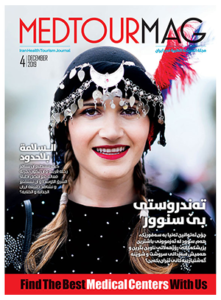The medical tourism industry has seen significant growth in the last three years. According to a report by the Medical Tourism Association, the global medical tourism market is expected to reach $143.8 billion by 2023, up from $72.5 billion in 2018. This represents a compound annual growth rate (CAGR) of 11.6%.
The report also found that the number of medical tourists worldwide is expected to reach over 25 million by 2023, up from 15 million in 2018.
The most popular destinations for medical tourists are India, Thailand, Mexico, Turkey, and Singapore. These countries offer high-quality healthcare services at lower costs than those found in developed countries such as the United States and Canada. Additionally, many of these countries have invested heavily in their healthcare infrastructure and have become increasingly attractive destinations for medical tourists seeking affordable treatments abroad.
Why are people more inclined to medical trips after the corona era?
The coronavirus pandemic has had a significant impact on the medical tourism industry. People are now more inclined to medical trips after the corona era due to a variety of reasons. At the beginning of this pandemic many countries had implemented strict travel restrictions, making it difficult for people to access healthcare services in their own countries.
Additionally, the pandemic has caused a disruption in the supply chain of medical equipment and drugs, leading to shortages and higher prices.
Furthermore, the fear of contracting COVID-19 has made people more cautious about their health and safety, leading them to seek out medical treatments abroad in countries with lower infection rates.
Finally, many people are taking advantage of the current economic downturn to save money on medical treatments by traveling abroad for cheaper options.
But why do we expect medical tourism to continue to grow?
- Expansion of Medical Tourism Destinations: As medical tourism continues to grow, more countries are likely to open up their healthcare systems to international patients. This will provide more options for medical tourists, allowing them to choose the best destination for their needs.
- Improved Quality of Care: With the increasing demand for medical tourism, healthcare providers are likely to invest in better technology and training for their staff in order to provide higher quality care.
- Increased Accessibility: As technology advances, it will become easier for medical tourists to access healthcare services from around the world. This could include virtual consultations and remote monitoring of treatments, as well as improved transportation options such as air ambulances and direct flights between countries.
- Lower Costs: The cost of medical treatments is likely to decrease due to increased competition among healthcare providers and improved efficiency in the delivery of services.
- Improved Regulations: Governments are likely to introduce regulations that protect the rights of medical tourists and ensure they receive safe and effective care while abroad.







